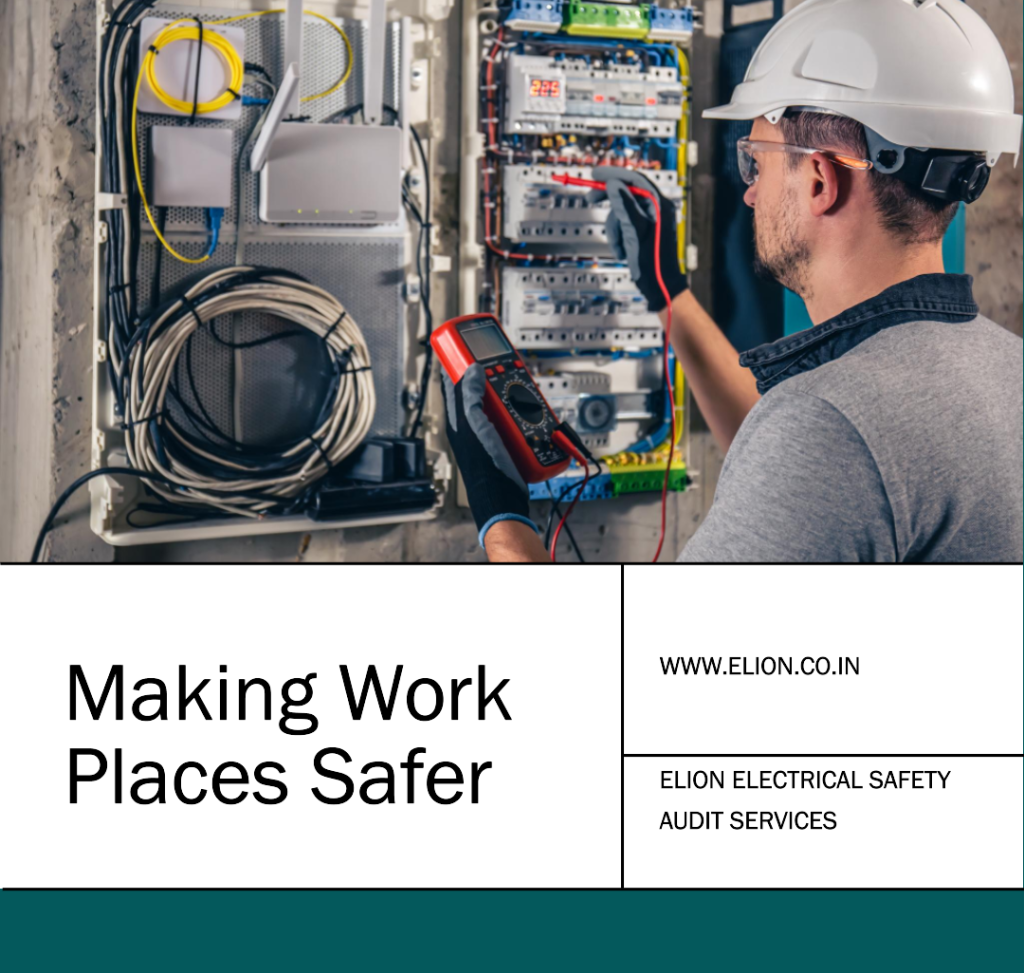Are you confident your workplace electrical safety program is keeping everyone protected? If you’re like most employers, you might not realize how often you should be checking and updating these critical safety measures.
Neglecting regular audits could leave your team at risk and your business vulnerable to costly accidents. You’ll discover exactly how often you need to audit your electrical safety program to stay compliant and keep your workplace safe. Keep reading—your employees’ safety and your peace of mind depend on it.

Credit: www.ishn.com
Importance Of Electrical Safety Audits
Electrical safety audits play a vital role in maintaining a safe work environment. Regular audits help identify risks before they cause harm. They create a system to manage electrical hazards effectively. This process ensures safety standards are met and upheld consistently.
Reducing Workplace Hazards
Audits find hidden electrical problems early. They prevent accidents such as shocks and fires. Inspections check wiring, equipment, and safety devices. Fixing issues quickly lowers the chance of injuries. A safer workplace means fewer disruptions and higher productivity.
Compliance With Regulations
Audits keep businesses aligned with legal safety rules. Many regulations require routine electrical checks. Passing these audits avoids fines and penalties. Following rules builds trust with employees and customers. It also shows a company’s commitment to safety.
Protecting Employees And Assets
Electrical audits protect workers from harm. They ensure equipment is safe and reliable. Preventing electrical failures saves money on repairs and downtime. Safe workplaces improve employee morale and reduce insurance costs. Protecting people and property is the top priority.

Credit: elion.co.in
Factors Influencing Audit Frequency
Determining how often to audit your electrical safety program depends on several key factors. These influence not only the timing but also the depth and focus of each audit. Understanding these elements can help you tailor your audit schedule to fit your unique workplace needs.
Industry Standards And Guidelines
Different industries have varying rules about electrical safety audits. Regulatory bodies often set minimum audit frequencies based on the nature of the work. For example, manufacturing plants may require more frequent checks than office environments due to heavier electrical usage and equipment.
Do you know which standards apply to your industry? Staying updated with organizations like OSHA or NFPA can help you avoid penalties and keep your workplace safe. Sometimes, these guidelines recommend annual audits, but your specific industry might call for more or less frequent evaluations.
Workplace Risk Levels
The risk level in your workplace plays a huge role in deciding audit frequency. Higher-risk environments, such as those with heavy machinery or wet conditions, demand more regular inspections. On the other hand, low-risk offices may not need audits as often.
Assess your current hazards carefully. If your electrical systems have frequent faults or are exposed to harsh conditions, consider increasing audit frequency. How often would you feel comfortable knowing your electrical safety program is thoroughly checked?
Previous Audit Findings
Your past audit results provide valuable clues about how often you should conduct future audits. If previous audits uncovered significant issues or recurring problems, more frequent follow-ups are necessary. Conversely, a clean audit history might justify longer intervals between checks.
Have you noticed patterns in past findings? Tracking these can help you spot trends and prevent bigger problems. Adjust your audit schedule based on what your history reveals, ensuring continuous improvement and safety.
Recommended Audit Intervals
Maintaining a safe workplace isn’t just about installing the right equipment; it’s also about ensuring your electrical safety programs stay up-to-date. Regular audits help identify gaps, prevent accidents, and comply with safety regulations. But how often should you review these programs? Let’s break it down into recommended intervals for maximum effectiveness.
Annual Audits
An annual audit is a must for every employer. This is your chance to take a deep dive into your entire electrical safety program. Evaluate everything: policies, procedures, equipment, and training.
Use this time to ensure compliance with standards like NFPA 70E or OSHA regulations. Have there been updates to codes or new risks introduced in the past year? Address them now to keep your workplace aligned with best practices.
Document all findings during the audit. A detailed report will help you track progress and show proof of compliance if required by authorities.
Quarterly And Monthly Checks
Quarterly and monthly checks are crucial for maintaining ongoing safety. These are not as comprehensive as annual audits but focus on specific areas prone to frequent changes or wear.
For example, test high-usage equipment monthly. Inspect personal protective equipment (PPE) quarterly to ensure it’s in top condition. These regular checks reduce the risk of small issues escalating into major problems.
Assign these tasks to trained staff and use checklists to ensure consistency. Consistent effort over time can save you from costly downtime or accidents later.
Continuous Monitoring Practices
Why wait for a scheduled audit when you can monitor safety continuously? Modern tools like electrical sensors and IoT devices can provide real-time data on equipment performance and potential hazards.
Set up alerts for issues like overheating or unusual power usage. This allows you to act immediately instead of waiting for the next check.
Encourage employees to report hazards as they arise. A proactive approach to safety fosters a culture of vigilance and accountability in your team.
Components Of An Effective Audit
An effective audit of your electrical safety program ensures a safer workplace and minimizes risks. To achieve this, your audit must cover several critical components. Each component addresses different aspects of safety, helping you identify gaps and improve your program.
Inspection Of Electrical Equipment
Regularly inspect all electrical equipment in your workplace. Look for signs of wear, damage, or improper usage that could pose safety hazards. For example, frayed wires or overheating equipment should be addressed immediately.
Use a checklist to ensure no equipment is overlooked. Include items like circuit breakers, extension cords, and power tools. These inspections not only keep your equipment in good condition but also protect your employees from potential accidents.
Review Of Safety Procedures
Examine the safety procedures outlined in your program to ensure they are still relevant and effective. Are your lockout/tagout protocols being followed consistently? Do your emergency response plans account for all possible scenarios?
Gather feedback from employees who use these procedures daily. They can often highlight gaps or suggest improvements you might not have considered. Simple updates can make a big difference in preventing incidents.
Employee Training And Awareness
Evaluate the training and awareness programs you provide to your employees. Are they aware of the risks associated with electrical equipment? Do they know how to respond to emergencies?
Host refresher courses to keep safety knowledge up-to-date. Interactive sessions, like hands-on training, can be more impactful than just handing out manuals. Engaged employees are more likely to follow safety protocols.
When was the last time you reviewed these components in your audit? Taking small, consistent steps can go a long way in creating a safer work environment.
Role Of Technology In Audits
Technology plays a vital role in how employers conduct audits of their electrical safety programs. It makes the process more efficient and accurate, helping you catch potential hazards before they cause harm. Using the right tools can transform a tedious task into a proactive safety measure.
Use Of Digital Tools
Digital tools have changed the way audits are performed. Mobile apps and software allow auditors to record findings instantly, reducing errors from manual note-taking. You can access checklists, past reports, and safety standards all in one place, speeding up the entire audit process.
Think about how much time you save when you don’t have to shuffle through piles of paper. Plus, digital records are easier to share with your team and regulators.
Automated Monitoring Systems
Automated systems keep an eye on electrical equipment 24/7. These systems can alert you immediately if something goes wrong, like a surge or overheating. This real-time monitoring helps you address issues before they turn into bigger problems during an audit.
Have you considered how continuous monitoring could reduce the frequency of full manual audits? It might allow you to focus only on areas flagged by the system, saving time and resources.
Data Analysis For Safety Improvements
Collecting data is just the first step. The real value lies in analyzing that data to find patterns and weaknesses in your safety program. Modern software can highlight recurring issues or risky behaviors that might not be obvious during a routine check.
Imagine spotting a trend where certain equipment consistently fails inspections. This insight lets you take targeted action, improving safety and reducing downtime. Are you using your audit data to its fullest potential?

Credit: www.safetyandhealthmagazine.com
Consequences Of Neglecting Audits
Ignoring regular audits of your electrical safety program can lead to serious consequences that affect every part of your business. These audits are not just routine checks; they help catch small issues before they become major hazards. Skipping them puts your employees, finances, and reputation at risk.
Increased Accident Risks
Without frequent audits, hidden electrical faults can go unnoticed. This raises the chance of electrical shocks, fires, or equipment failures that could injure your staff. Have you ever thought about how a minor oversight might lead to a major accident?
Regular audits identify worn-out wiring, faulty circuit breakers, and non-compliant equipment early. This proactive approach reduces workplace injuries and ensures a safer environment for everyone.
Legal And Financial Penalties
Failing to audit your electrical safety program can put you on the wrong side of safety regulations. Authorities can impose heavy fines if your workplace is found non-compliant during inspections.
Besides fines, you might face costly lawsuits from injured employees or penalties for downtime caused by accidents. Are you prepared to handle the financial fallout from a preventable safety failure?
Damage To Company Reputation
News about workplace accidents or safety violations spreads quickly. Neglecting audits can damage your company’s image, making clients and potential employees think twice about associating with you.
Rebuilding trust after a safety incident is tough and expensive. Protect your reputation by staying vigilant with your electrical safety audits—it shows you value safety and responsibility.
Best Practices For Maintaining Safety
Maintaining a safe workplace is not just about ticking boxes; it’s about actively protecting your employees and your business. Electrical safety programs are a cornerstone of this effort, but how do you ensure they stay effective? The answer lies in adopting best practices that keep your safety protocols relevant, actionable, and up-to-date.
Scheduling Regular Audits
Regular audits are the backbone of an effective electrical safety program. By setting a fixed schedule for these reviews—whether quarterly, biannually, or annually—you create consistency and accountability.
Think about the risks of skipping audits. Outdated procedures or unnoticed hazards can easily lead to accidents. A simple calendar reminder can save lives and prevent costly incidents.
Don’t wait for a problem to arise. Proactively look for weak spots in your safety practices and address them before they escalate.
Engaging Qualified Professionals
Electrical safety is not a DIY project. Collaborate with certified professionals who specialize in workplace safety. Their expertise can uncover risks you might miss.
Qualified auditors can assess compliance with regulations and recommend actionable improvements. They often have access to tools and techniques that enhance precision.
When was the last time you brought in an expert? If it’s been a while, consider scheduling an external review to validate your safety measures.
Continuous Employee Education
Safety programs are only as good as the people implementing them. Train your employees regularly to ensure they understand safety protocols and can respond effectively in emergencies.
Interactive workshops, short refresher courses, or even quick safety drills can make a huge difference. The goal is to keep safety top-of-mind, not just a distant policy.
Ask yourself: Are your employees confident about what to do in case of an electrical hazard? If not, it’s time to make education a priority.
Frequently Asked Questions
How Often Should Electrical Safety Programs Be Audited?
Employers should audit electrical safety programs at least annually. Regular audits ensure compliance, identify risks, and maintain workplace safety standards effectively.
Why Is Auditing Electrical Safety Programs Important?
Auditing ensures proper implementation, detects hazards, and helps maintain compliance with safety regulations, reducing risks of electrical accidents.
Who Is Responsible For Electrical Safety Audits At Work?
Employers are responsible for conducting audits. They may appoint safety officers or external experts to ensure thorough evaluations.
What Standards Guide Electrical Safety Audits?
Audits are guided by OSHA regulations and NFPA 70E standards. These frameworks help ensure compliance and workplace safety.
Conclusion
Regular audits keep electrical safety programs effective and up to date. Employers should schedule checks at least once a year. Frequent reviews help spot risks before accidents happen. Safety rules can change, so updates are crucial. Consistent audits protect workers and reduce downtime.
Small efforts lead to safer workplaces and fewer hazards. Don’t wait for problems; stay proactive with audits. A strong safety program saves lives and money. Make electrical safety a priority every day.








